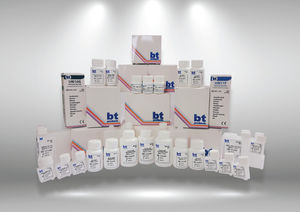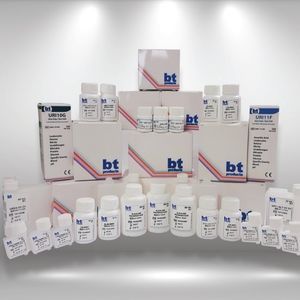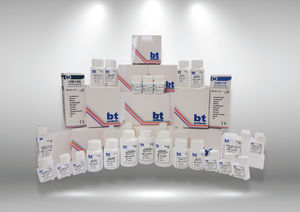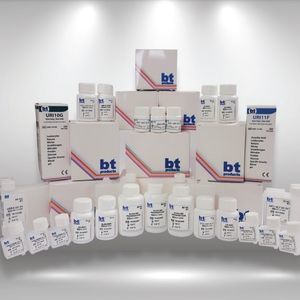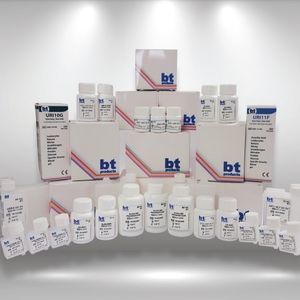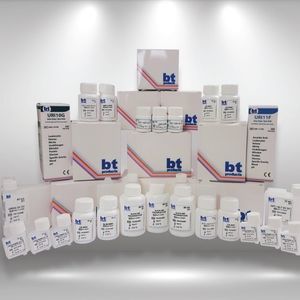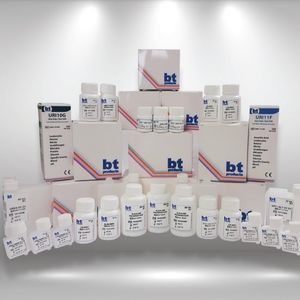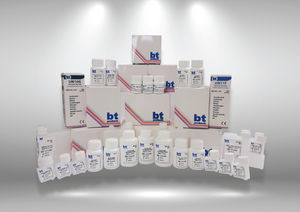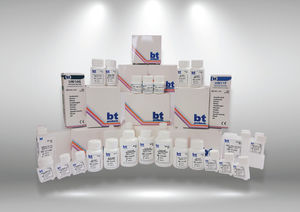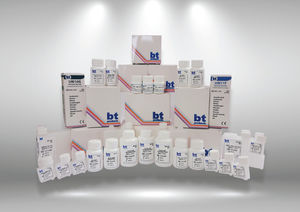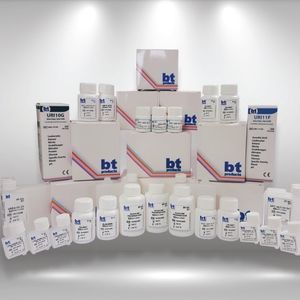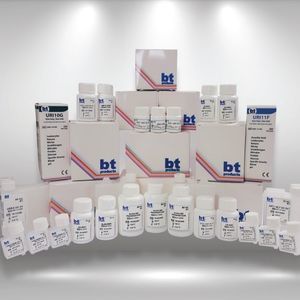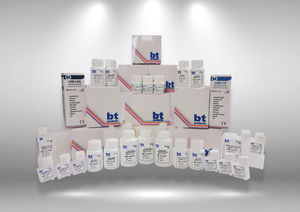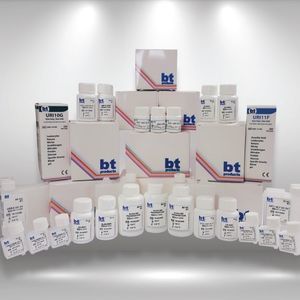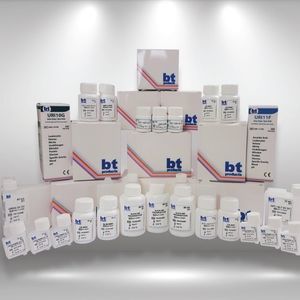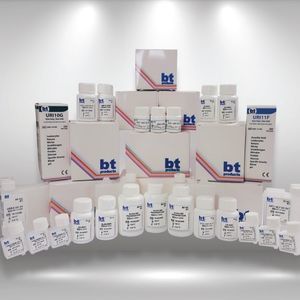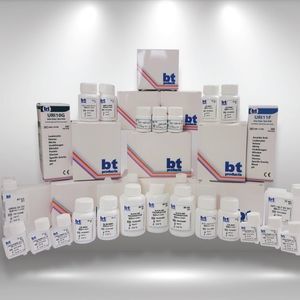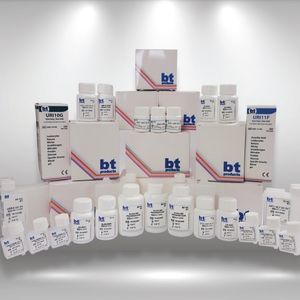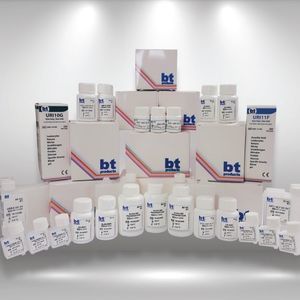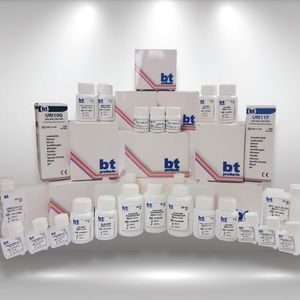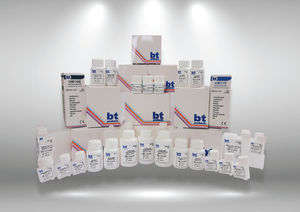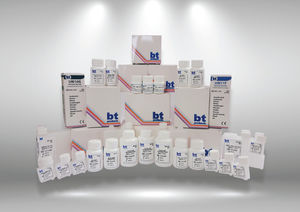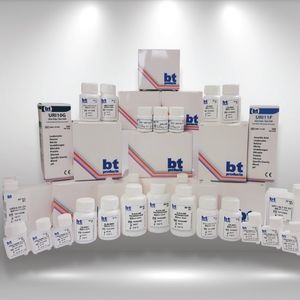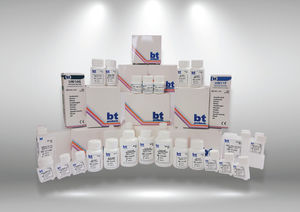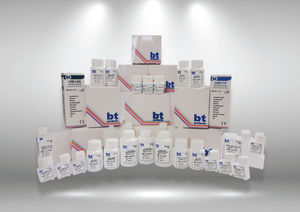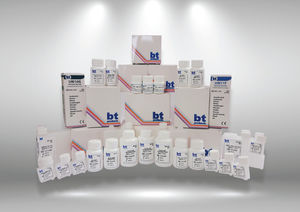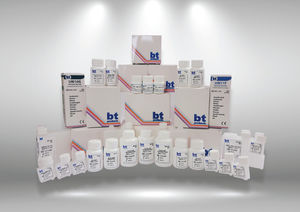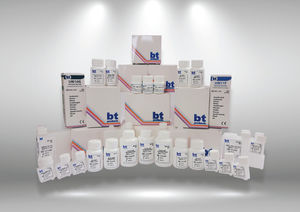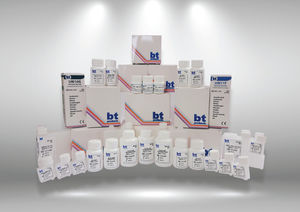
- Laboratory
- Laboratory medicine
- Solution reagent
- BILIMSEL TIBBI ÜRÜNLER
Glucose reagent kit GLU -10 seriessolutiondiagnosticfor clinical chemistry
Add to favorites
Compare this product
Characteristics
- Type
- solution
- Applications
- diagnostic, for clinical chemistry
- Format
- liquid
- Tested parameter
- glucose
- Method
- enzymatic
- Storage temperature
Max.: 8 °C
(46 °F)Min.: 2 °C
(36 °F)
Description
For the in vitro quantitative determination of Glucose in serum.
METHODOLOGY
Early enzymatic methods for glucose determination used Glucose Oxidase to catalyze the oxidation of glucose to hydrogen peroxide and gluconic acid. The hydrogen peroxide that is formed is measured by the oxidation of a chromagens. Many chromagens were investigated but many were discarded because of possible carcinogenicity, toxicity, instability or because they were affected by many interfering substances. Trinder modified Emerson to develop an efficient peroxidase phenolaminophenazone system for the quantitation of hydrogen peroxide by formulation of a red quinoneimine dye. This method is less influenced by interfering substances and does not suffer from the many drawbacks of earlier methods. The present procedure is based on the above principle but utilizes a non-corrosive phenol substitute for added safety and convenience.
PRECAUTIONS
1. This reagent is for in vitro diagnostic use only.
2. This reagent contains sodium azide at 0,05%
REAGENT PREPARATION
Reagent is liquid and ready to use.
REAGENT DETERIORATION
Do not use if:
1. The reagent fails to recover stated control values or meet stated linearity.
2. The reagent develops turbidity, or other evidence of microbial growth.
INTERFERENCES
Bilirubin: No interference up to 10 mg/dL.
Hemoglobin: No interference up to 500 mg/dL.
Lipemia: No interference in the presence of triglycerides up to 1500 mg/dL.
Ascorbic acid: No interference up to 10 mg/dL.
Grossly lipemic or icteric samples will cause false glucose values, consequently a patient blank should be run.
Catalogs
No catalogs are available for this product.
See all of BILIMSEL TIBBI ÜRÜNLER‘s catalogsOther BILIMSEL TIBBI ÜRÜNLER products
Universal Bottled Clinical Chemistry Reagents
Related Searches
- Solution reagent kit
- Protein reagent kit
- Diagnostic reagent kit
- Laboratory reagent kit
- Enzyme reagent kit
- Histology reagent kit
- Dye reagent
- Antibody
- Buffer solution reagent kit
- Clinical chemistry reagent
- Clinical chemistry analyzer
- Quality control reagent kit
- Clinical reagent kit
- Virus reagent kit
- Automatic clinical chemistry analyzer
- Benchtop clinical chemistry analyzer
- Test strip
- Tissue reagent kit
- Electrolyte reagent kit
- Colorimetric reagent kit
*Prices are pre-tax. They exclude delivery charges and customs duties and do not include additional charges for installation or activation options. Prices are indicative only and may vary by country, with changes to the cost of raw materials and exchange rates.



